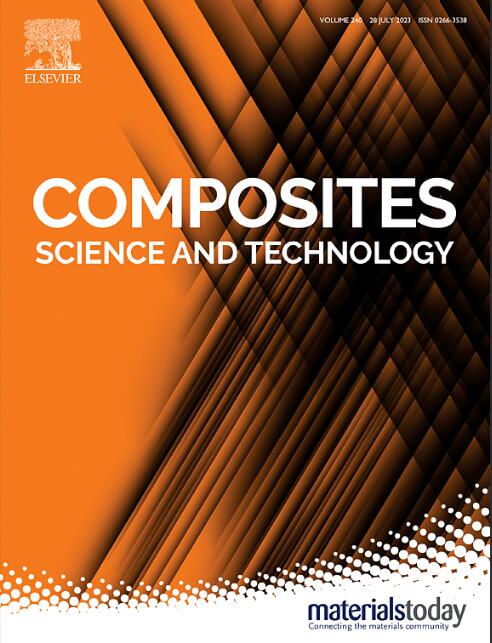Effect of crossing warp arrangements on delamination resistance of 3D woven composite T-joints under in-plane tensile loading
IF 8.3
1区 材料科学
Q1 MATERIALS SCIENCE, COMPOSITES
引用次数: 0
Abstract
An experimental study for investigating the delamination behaviour of 3D woven composite T-joints with weave variations and optimising weave architectures is carried out. This study involves 10 types of crossing warp architectures at the junction. Quasi-static tensile load is applied to two flanges of 3D woven composite T-joints to evaluate the in-plane mechanical performance. The crossing warp architecture effectively improves the in-plane mechanical performance. Results indicate a significant influence of crossing warp arrangements on failure modes of the 3D woven composite T-joints. The use of internal crossing warp architectures leads to severe delamination in the 3D woven composite T-joints while the composite T-joints with 3D woven external crossing warps primarily fail due to the debonding of fibres and matrix and fibre breakage. The optimal weave architecture for 3D woven composite T-joints is confirmed by analysing the in-plane mechanical behaviour with different crossing warp arrangements and proportions. Regardless of the crossing warp proportions, the external crossing warp architectures outperformed their internal counterparts in resisting delamination, resulting in a maximum increase of 68.75 %, 30.04 % and 116.81 % in modulus, strength and failure strain respectively.

平面拉伸载荷下交叉经纱排列对三维编织复合材料 T 型接头抗分层能力的影响
为研究具有编织变化的三维编织复合材料 T 型接头的分层行为并优化编织结构,我们开展了一项实验研究。这项研究涉及 10 种交接处的交叉经纱结构。对三维编织复合材料 T 型接头的两个翼缘施加准静态拉伸载荷,以评估平面内的机械性能。交叉经纱结构有效地改善了平面力学性能。结果表明,交叉经纱排列对三维编织复合材料 T 型接头的失效模式有重大影响。使用内部交叉经纱结构会导致三维编织复合材料 T 形接头出现严重分层,而使用三维编织外部交叉经纱的复合材料 T 形接头则主要由于纤维与基体脱粘和纤维断裂而失效。通过分析不同交叉经纱排列和比例下的面内机械性能,确认了三维编织复合材料 T 形接头的最佳编织结构。无论交叉经纱比例如何,外部交叉经纱结构在抗分层方面都优于内部交叉经纱结构,其模量、强度和破坏应变的最大增幅分别为 68.75%、30.04% 和 116.81%。
本文章由计算机程序翻译,如有差异,请以英文原文为准。
求助全文
约1分钟内获得全文
求助全文
来源期刊

Composites Science and Technology
工程技术-材料科学:复合
CiteScore
16.20
自引率
9.90%
发文量
611
审稿时长
33 days
期刊介绍:
Composites Science and Technology publishes refereed original articles on the fundamental and applied science of engineering composites. The focus of this journal is on polymeric matrix composites with reinforcements/fillers ranging from nano- to macro-scale. CSTE encourages manuscripts reporting unique, innovative contributions to the physics, chemistry, materials science and applied mechanics aspects of advanced composites.
Besides traditional fiber reinforced composites, novel composites with significant potential for engineering applications are encouraged.
 求助内容:
求助内容: 应助结果提醒方式:
应助结果提醒方式:


